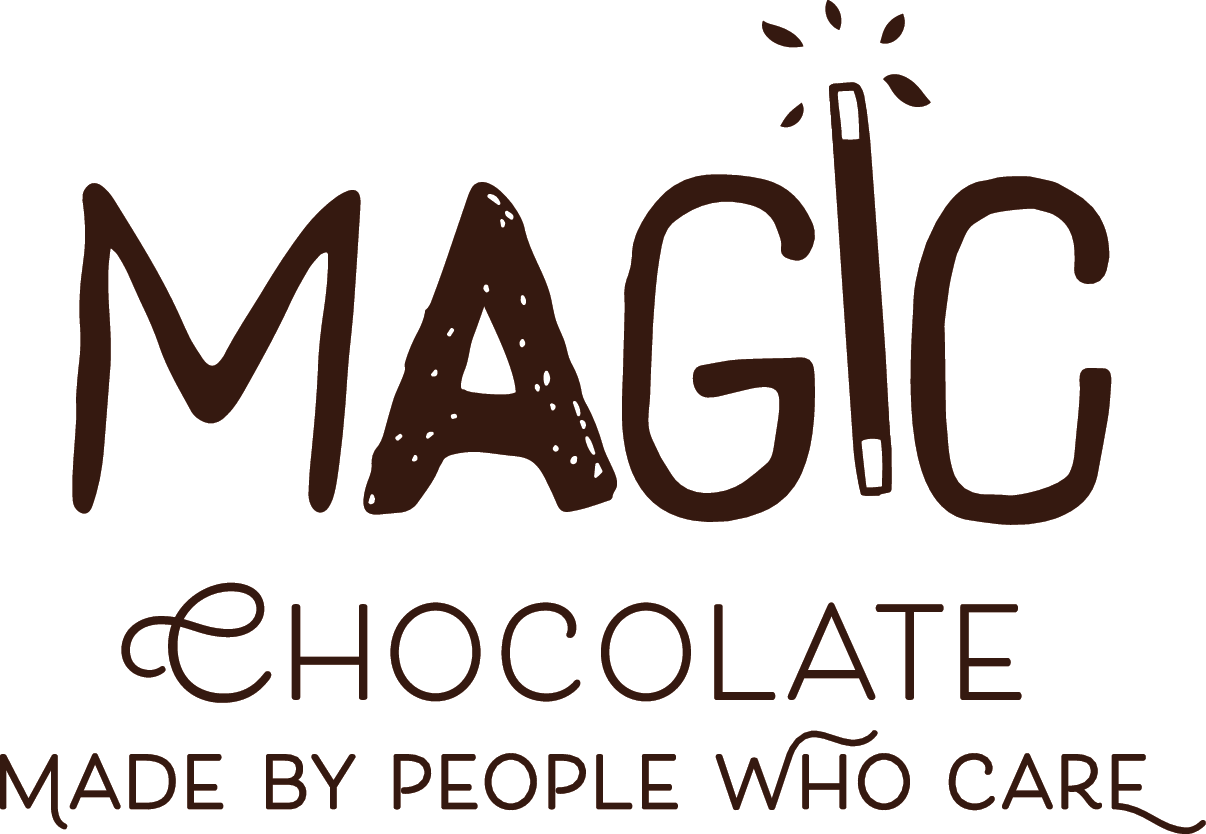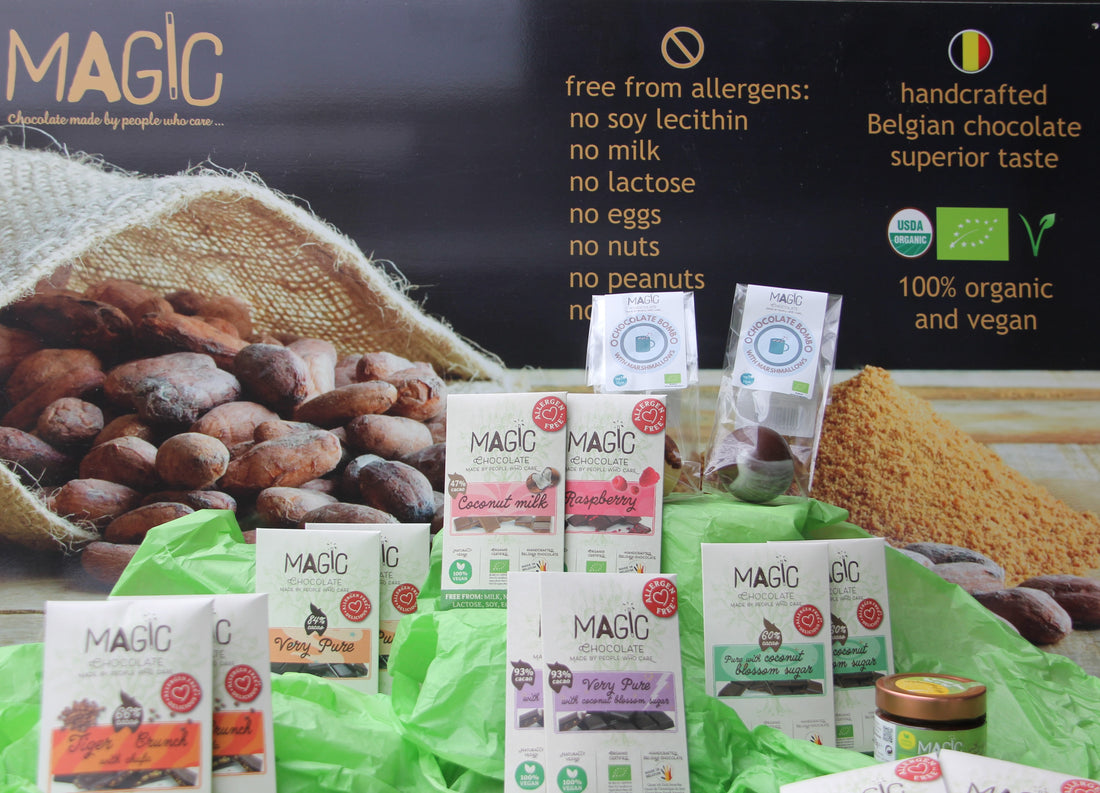From cocoa to magical vegan chocolate: A journey to sustainable pleasure
The demand for vegan chocolate has exploded in recent years as more people embrace plant-based lifestyles. The production of vegan chocolate is an art that combines the richness of cocoa butter with the exquisite flavors of cocoa mass – and powder. This blog takes you on a journey through the fascinating process of creating vegan chocolate, from sourcing ingredients to the final product, while emphasizing the importance of sustainability in this delectable industry.
Sustainable Cocoa Beans Sourcing:
The basis of every exceptional chocolate starts with ethically sourced cocoa beans. Sustainable agricultural practices ensure the protection of biodiversity, fair trade for farmers and a positive impact on local communities. Vegan chocolate producers like us prioritize cocoa beans that are organic and shade grown, preserving rainforests and preventing soil degradation. Organic cocoa beans are grown without the use of synthetic pesticides, herbicides, fertilizers and genetically modified organisms. This means that there are no residues of harmful chemicals on the beans, which benefits the health of the consumer. In addition, the use of organic cocoa beans is environmentally friendly, rich in nutrients and gives a better taste.
From cocoa beans to cocoa mass
Once the cocoa beans are harvested, they undergo a careful process to transform them into cocoa mass. The beans are carefully fermented and dried to develop their distinctive flavours. They are then roasted to further enhance their aromas and flavours. After cooling, the roasted beans are extracted to remove the outer shell, leaving cocoa nibs.
These nibs are then ground into a thick paste, known as cocoa mass. At this point, the vegan chocolate production process can take different paths, depending on the desired flavor profile and texture. The process of processing cocoa beans into cocoa mass requires craftsmanship and precision to achieve the desired taste and quality. Different producers and regions have their own unique methods and traditions for this process, contributing to the diversity in flavor profiles of cocoa products around the world.
Separating Cocoa Mass into Cocoa Butter and Powder:
To make vegan chocolate, the cocoa mass must be separated into its two main components: cocoa butter and cocoa powder. This is called the cocoa split. The mass undergoes a hydraulic pressing process, in which the fatty component, cocoa butter, is extracted from the solid part, cocoa powder. The cocoa powder that remains after pressing can be further processed to obtain a finer powder. This may include finely grinding, sieving and possibly treating with alkaline substances to obtain so-called "alkalized" cocoa powder. The cocoa powder is often used in baking and cocoa-based drinks, while cocoa butter contributes to the smoothness and creaminess of the final chocolate product.
Production of Vegan Chocolate:
With cocoa butter and cocoa powder in hand, the vegan chocolate production process enters its crucial phase. The cocoa mass is heated with the cocoa mass and mixed with other herbal ingredients, such as coconut milk or rice milk, to create a luscious and creamy base. Additional flavors, such as vanilla, sea salt, or natural sweeteners, are added to enhance the flavor.
The mixture is then carefully conched, a process in which the chocolate is ground, heated and continuously stirred to refine its texture and flavour. This step can take several hours or even days, depending on the desired result. The chocolate is then tempered to ensure a glossy appearance and a satisfying crunch when you bite. Finally, this chocolate is poured into the desired figure or bar using a mold.
Why Vegan Chocolate?:
Vegan Chocolate is produced without the use of animal products, such as dairy or honey. By choosing vegan chocolate, you avoid contributing to the exploitation of animals in the food industry. Much chocolate is made with dairy products, vegan chocolate offers an ethical choice for those pursuing an animal-friendly diet. In addition, it can be healthier than traditional chocolate, especially if it is made with high-quality, natural ingredients. Also, the production of animal products often has a significant impact on the environment, such as deforestation, water pollution and greenhouse gas emissions. By avoiding animal products, one can contribute to reducing the ecological footprint and promoting more sustainable agricultural practices. Finally, vegan chocolate is suitable for people with lactose intolerance or dairy allergies. It offers an alternative for those who have to eat dairy-free.
Conclusion:
The journey from cocoa butter and cocoa liquor to delicious vegan chocolate is a remarkable combination of craftsmanship, sustainability and ethical sourcing. By choosing vegan chocolate you not only enjoy a delicious treat, but you also contribute to the preservation of our planet and the well-being of communities worldwide. Remember that every bite of vegan chocolate represents a sustainable choice, allowing you to enjoy something guilt-free that is both delicious for your taste buds and kind to the environment.

